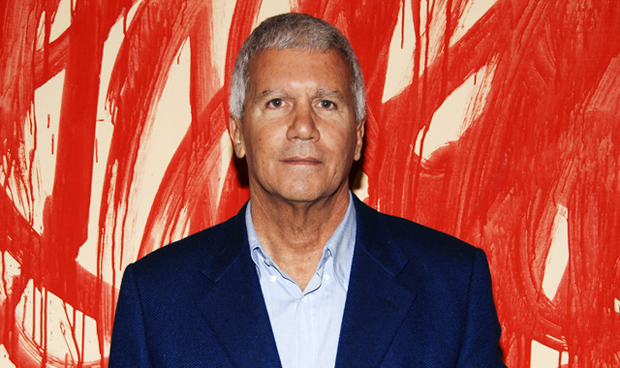Galleries
8 Secrets to Larry Gagosian’s Success Revealed
Trust your employees, and don't waste time on small talk.

Trust your employees, and don't waste time on small talk.

Cait Munro

Larry Gagosian has built a veritable art sales empire. From humble beginnings as a poster salesman in 1970s Los Angeles, Gagosian has climbed his way to the top. He currently operates 15 spaces in New York, London, Los Angeles, Rome, Athens, Hong Kong, Paris, and Geneva, where he represents some of the biggest names in contemporary art.
How does Gagosian do it? Magnus Resch, in his buzzy new book, Management of Art Galleries, has revealed some of the secrets to Gagosian’s success. The book features case studies of various ultra-successful art dealers, and among them is Gagosian. While Resch was unable to speak directly to anyone from the gallery directly, he’s culled information from unofficial interviews with gallery employees as well as profiles in Vogue and the Wall Street Journal.
Resch likens the structure of Gagosian to that of major corporations like Procter & Gamble, but it sounds like the gallery is also surprisingly progressive. Here, we’ve boiled down the Gagosian case study to its essence, for helpful guidance for anyone looking to follow suit (though you may also want to read Jeffrey Deitch’s advice, in the same book, about the perils of following suit).
1. Reserve personal time for your most important clients
Larry is reportedly fastidious about getting face-to-face time with his biggest clients—these include hedge fund manager Steve Cohen, Christie’s owner Francois Pinault, financier Leon Black, publishing magnate S.I. Newhouse, and philanthropist Eli Broad—but only them. Plebeians, just try to get a word with the man.
2. Hire women
While hiring a staff of articulate, well-heeled women isn’t exactly a revolutionary business practice in the gallery world, women make up a staggering 75 percent of Gagosian’s employees. Gagosian is so well-known for his coterie of female staffers that Vogue ran a 2011 spread profiling several “Gagosiennes.” Aside from that though, as per Resch, there is “no discernible common thread in their backgrounds.”

Larry Gagosian and Takashi Murakami.
Photo: Clint Spaulding/Patrick McMullan.
3. Go with your gut when hiring
While Gagosian has poached his fair share of talent from auction powerhouses like Christie’s and Sotheby’s, he’s also hired people with little prior art world experience—and at least one who doesn’t have a college degree. He is typically intimately involved in the hiring process, and hires based on gut instincts. “He’s hired people without knowing what they’re going to do, just to keep them from slipping away,” artist Cecily Brown revealed to Vogue.
4. Trust your employees
With spaces all over the world, Gagosian relies on a team of trusted directors to manage day-to-day operations and liaise with big-name artists and collectors. Each employee is reportedly assigned to manage an artist, while collectors are assigned to whomever the dealt with upon first contact.
5. Don’t waste time on small talk
While directors and other key employees are often on calls with Gagosian multiple times a day, he doesn’t waste time with small talk or other niceties like “hello” and “goodbye.” He’s also not interested in hearing about what tasks employees are currently engrossed in, often uttering the phrase: “I don’t want to know what you’re working on. I want to know when it’s done.”

Larry Gagosian
6. Sales, sales, sales
The best way to get ahead at Gagosian? Sell some art. A lot of it. “You are only as good as your next deal,” one employee told Vogue.
7. Reward hard work
Gagosian’s salaries are among the best in the industry, according to Resch, and employees earn a 10 percent portion of the gallery’s commission when they close a deal. Bonuses are awarded to those who lure prime artists to the gallery, and those employees even get 10 percent of that artist’s sales for the next year.
8. Have a sense of humor
Larry isn’t the first person that springs to mind when we think of a jokester, but it turns out, he has a pretty good sense of humor. In an email to his staff, he once wrote: “Today is my birthday. Please sell something.”